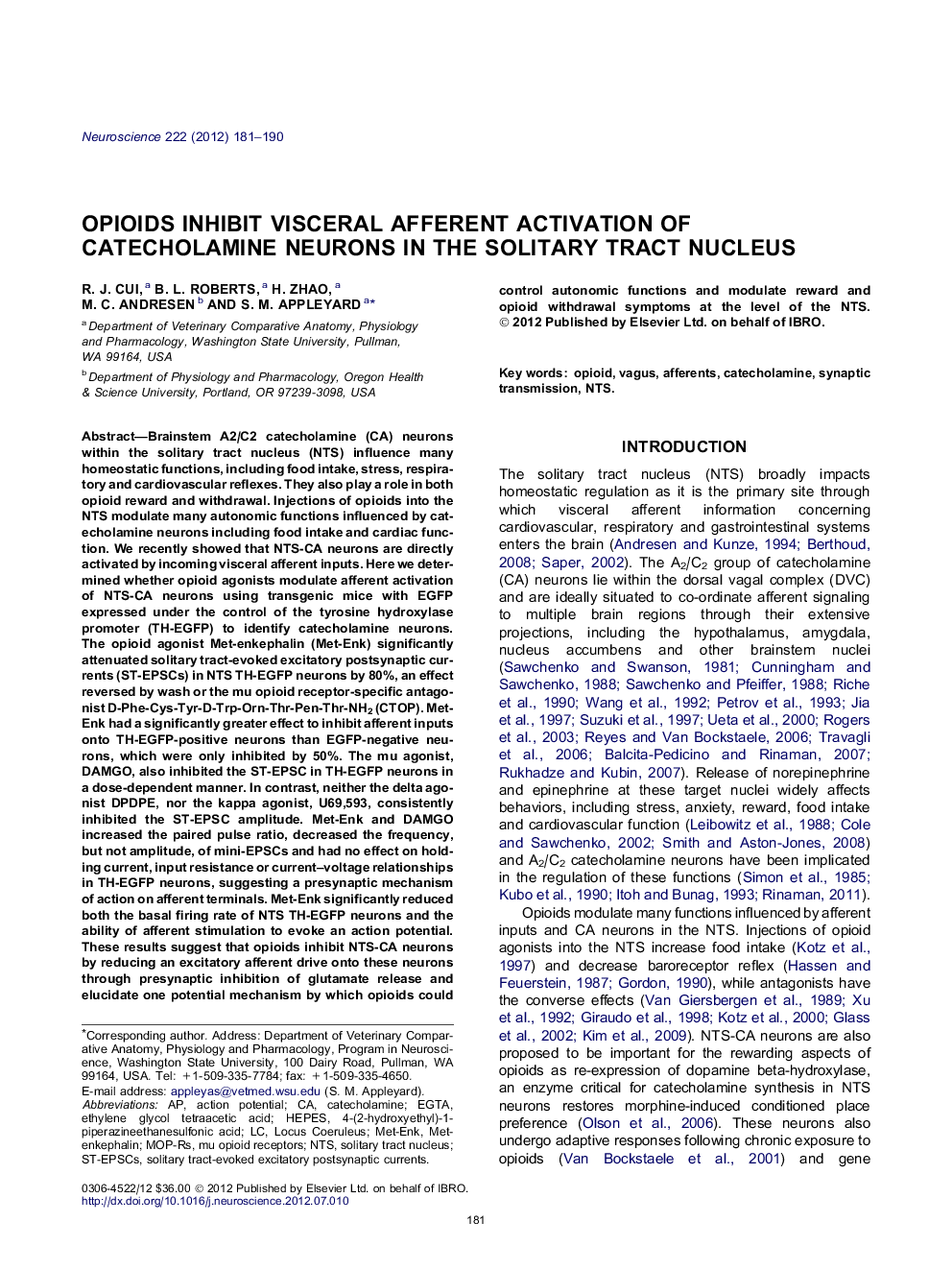| کد مقاله | کد نشریه | سال انتشار | مقاله انگلیسی | نسخه تمام متن |
|---|---|---|---|---|
| 4338264 | 1614854 | 2012 | 10 صفحه PDF | دانلود رایگان |

Brainstem A2/C2 catecholamine (CA) neurons within the solitary tract nucleus (NTS) influence many homeostatic functions, including food intake, stress, respiratory and cardiovascular reflexes. They also play a role in both opioid reward and withdrawal. Injections of opioids into the NTS modulate many autonomic functions influenced by catecholamine neurons including food intake and cardiac function. We recently showed that NTS-CA neurons are directly activated by incoming visceral afferent inputs. Here we determined whether opioid agonists modulate afferent activation of NTS-CA neurons using transgenic mice with EGFP expressed under the control of the tyrosine hydroxylase promoter (TH-EGFP) to identify catecholamine neurons. The opioid agonist Met-enkephalin (Met-Enk) significantly attenuated solitary tract-evoked excitatory postsynaptic currents (ST-EPSCs) in NTS TH-EGFP neurons by 80%, an effect reversed by wash or the mu opioid receptor-specific antagonist D-Phe-Cys-Tyr-D-Trp-Orn-Thr-Pen-Thr-NH2 (CTOP). Met-Enk had a significantly greater effect to inhibit afferent inputs onto TH-EGFP-positive neurons than EGFP-negative neurons, which were only inhibited by 50%. The mu agonist, DAMGO, also inhibited the ST-EPSC in TH-EGFP neurons in a dose-dependent manner. In contrast, neither the delta agonist DPDPE, nor the kappa agonist, U69,593, consistently inhibited the ST-EPSC amplitude. Met-Enk and DAMGO increased the paired pulse ratio, decreased the frequency, but not amplitude, of mini-EPSCs and had no effect on holding current, input resistance or current–voltage relationships in TH-EGFP neurons, suggesting a presynaptic mechanism of action on afferent terminals. Met-Enk significantly reduced both the basal firing rate of NTS TH-EGFP neurons and the ability of afferent stimulation to evoke an action potential. These results suggest that opioids inhibit NTS-CA neurons by reducing an excitatory afferent drive onto these neurons through presynaptic inhibition of glutamate release and elucidate one potential mechanism by which opioids could control autonomic functions and modulate reward and opioid withdrawal symptoms at the level of the NTS.
► Mu opioids inhibit visceral afferent activation of NTS catecholamine neurons.
► Inhibition is through a presynaptic mechanism to decrease glutamate release.
► Opioids reduce both afferent-evoked action potentials and basal firing rate.
► The effect is greater in catecholamine vs. non-catecholamine neurons in the NTS.
Journal: Neuroscience - Volume 222, 11 October 2012, Pages 181–190